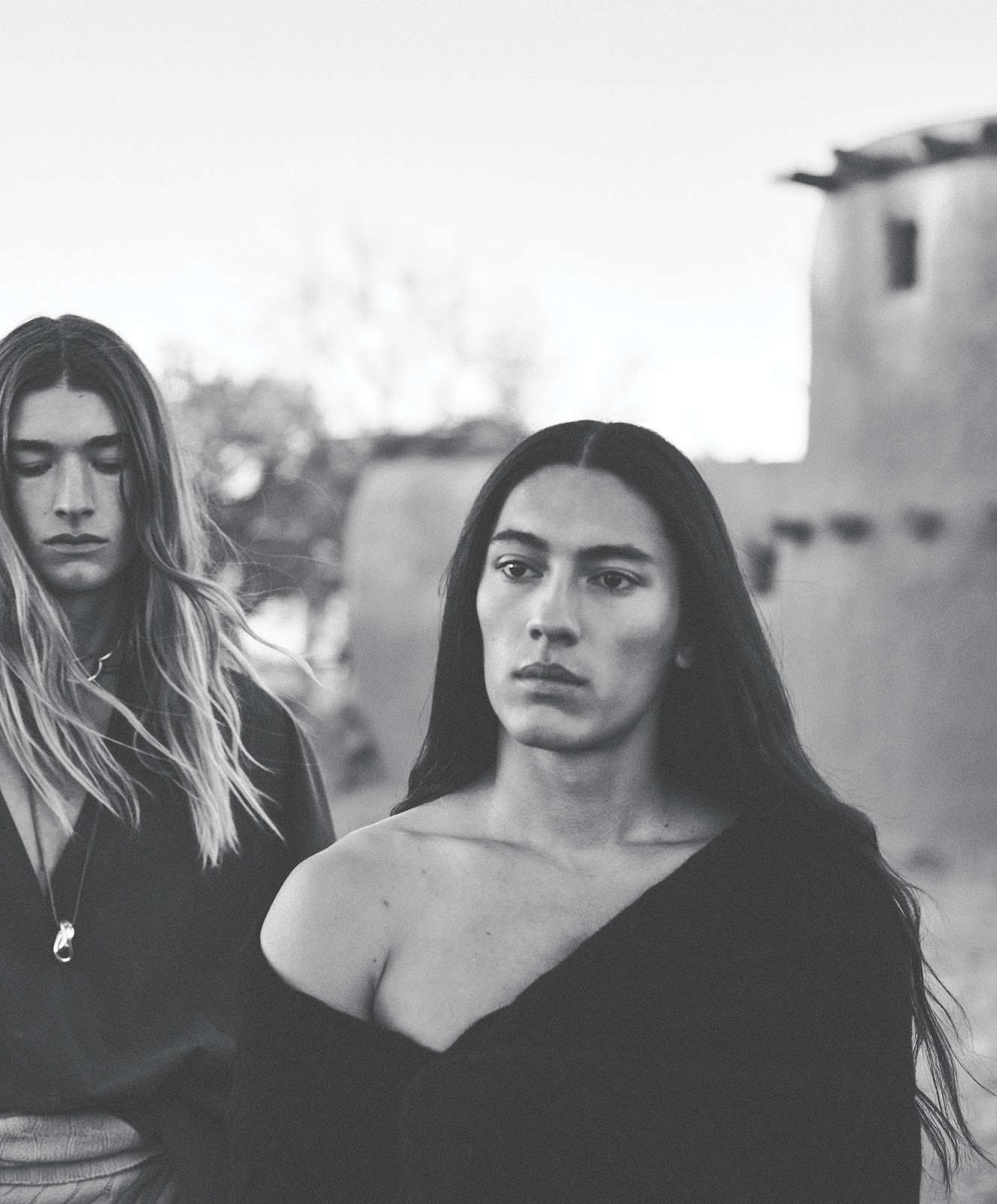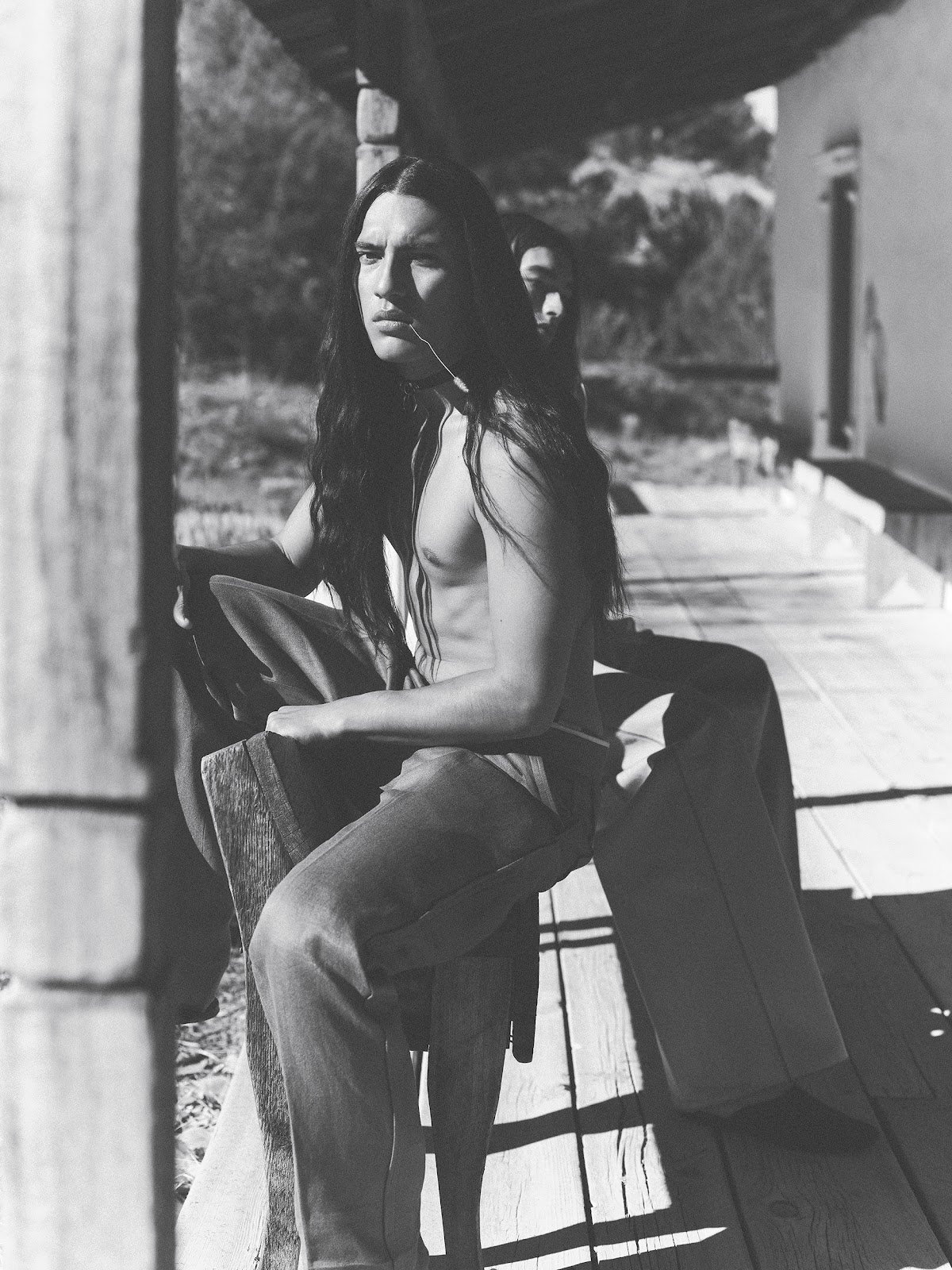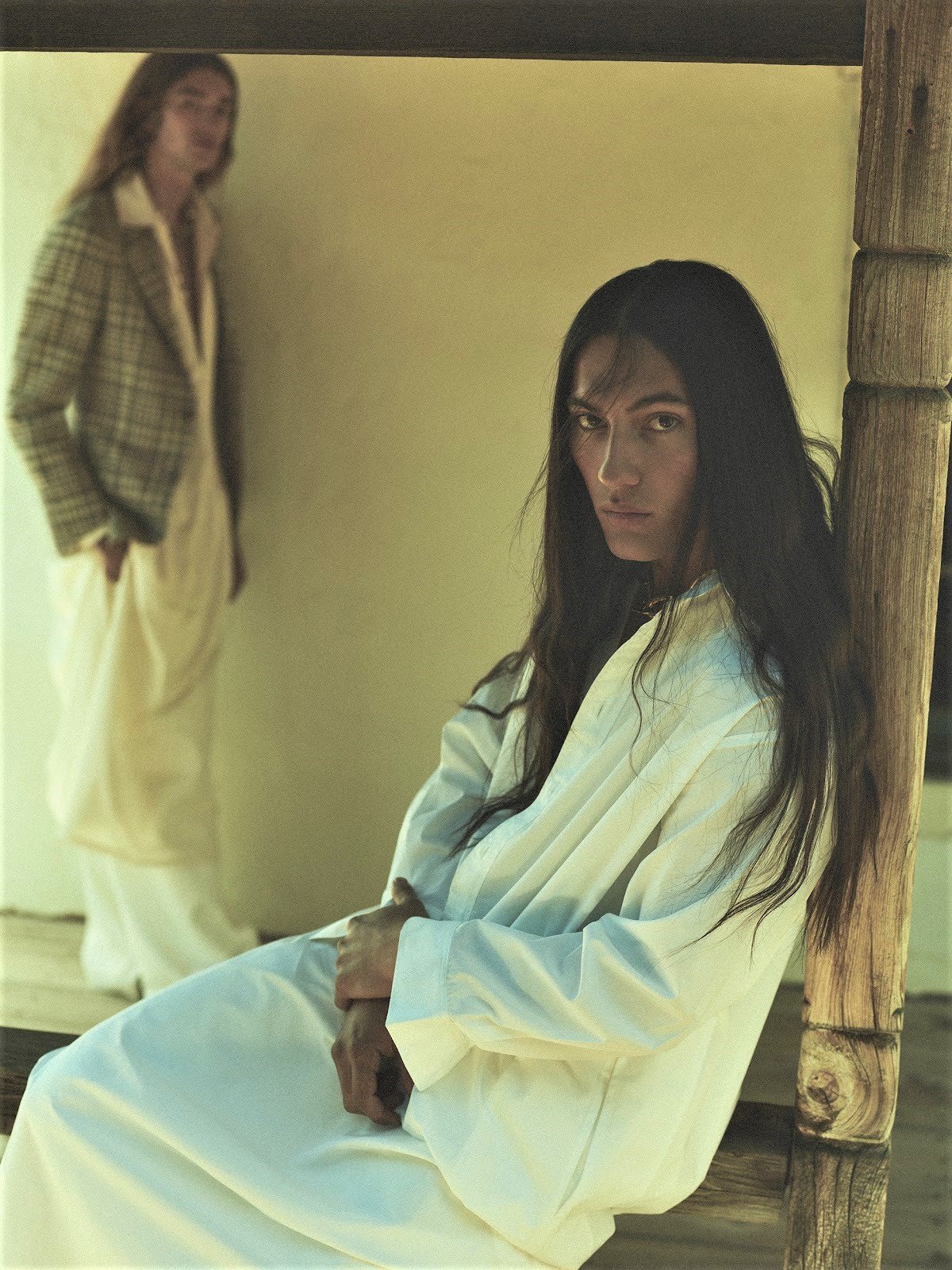Cherokee Jack and Sam Mallos by Annemarieke van Drimmelen in WSJ Magazine Men SS-2022
/Annemarieke van Drimmelen Captures Cherokee Jack and Sam Mallos in WSJ Magazine AOC Fashion
WSJ Magazine shares this spring 2022 men’s fashion story featuring models Cherokee Jack and Sam Mallos. Photographer Annemarieke van Drimmelen and stylist Giovanni Dario Laudicina traveled to Santa Fe, New Mexico, where they shot the fashion story at El Rancho de las Golondrinas, or “the Ranch of the Swallows.”
This historic ranch, now a living history museum, dates from the early 1700s and was an important ‘paraje’ or stopping place along the famous ‘El Camino Real’, the Royal Road from Mexico City to Santa Fe.
Van Drimmelen [IG] has close ties to New Mexico, since her father moved there nearly 12 years ago. “The light is absolutely phenomenal—the way it reflects on the earth. It brings this amazing warmth,” she says, noting that these qualities once drew artists such as Georgia O’Keeffe to the area.
Both models looks quite spectacular in the WSJ Magazine photo shoot. AOC’s complimentary link takes you to WSJ to review the product credits.
Cherokee Jack’s Heritage
Last year I had a totally visceral response to Cherokee Jack’s images by Richard Phibbs — his first ‘commercial’ shoot as an adult. He modeled as a child for years. Cherokee Jack by Richard Phibbs for Man of Metropolis | Minnesota History of Mankato Hangings AOC Fashion
The images caused me to reflect on our mutual Minnesota area upbringings, my writing a play about Minnesota statehood that was performed by my school, and the Mankato hangings — a devastating part of the heritage of my small Minnesota city that was unknown to me until then.
In trying to know more about the model, I learned a bit of agonizing Mankato, Minnesota history.
The Place of Women in Cherokee Society
The people of Cherokee Nation call themselves the Aniyunwiya, which means ‘Principal People’. The Cherokee society is historically matrilineal, meaning clanship is passed through the mother. Among the Cherokees, women were considered the head of household, with the home and children belonging to her should she separate from her husband. Women had an equal voice in the affairs of the tribe.
In writing about Bella Hadid’s references to the Egyptian goddess Sekhmet Tuesday evening, I referenced the demise of warrior goddesses, an end to female power and influence that was in its final phase in fifth century Greece. That statement is historically correct about Europe and the rise of Christianity.
But in the ‘undiscovered’ Americas, advanced indigenous cultures flourished and women held significant power in tribal affairs, generally enjoying far more power than the white Christian women who arrived in the Americas.


